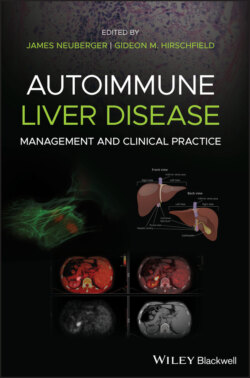Читать книгу Autoimmune Liver Disease - Группа авторов - Страница 21
Lipid Metabolism
ОглавлениеA major role of the liver in lipid metabolism is to synthesize large quantities of cholesterol and phospholipids, many of which are packaged with lipoproteins and made available to the rest of the body. Free cholesterol also derives from the uptake of chylomicron remnants and lipoproteins from the circulation. BAs are synthesized from free cholesterol, and both BA and cholesterol are secreted into bile. Bile provides a major route for cholesterol excretion.
The rate‐limiting step of cholesterol synthesis is the conversion of 3‐hydroxy‐3‐methylglutaryl‐CoA (HMG‐CoA) to mevalonate by the enzyme HMG‐CoA reductase, which is located almost exclusively in periportal cells. Synthesis is increased in biliary duct obstruction, terminal ileal resection, biliary or intestinal lymph fistula, and with medications such as colestyramine, corticosteroids and thyroid hormones. Cholesterol synthesis is inhibited by BAs, cholesterol feeding, fasting, and medications such as fibrates, nicotinic acid, and statins.
During chronic cholestasis, such as in primary biliary cholangitis and primary sclerosing cholangitis (PSC) but also in acute cholestasis, cholesterol serum levels are increased. This is mainly secondary to retention of cholesterol normally excreted in bile but also to increased hepatic synthesis of cholesterol, reduced plasma lecithin‐cholesterol acyltransferase activity, and regurgitation of biliary lecithin, which produces a shift of cholesterol from pre‐existing tissue cholesterol into the plasma. In patients with severe chronic cholestasis who are however malnourished, for example in premature ductopenic variant of primary biliary cholangitis (PBC) or in carcinomatous biliary obstruction, the serum cholesterol may be lower. Elevated cholesterol levels are clinically associated with skin xanthomas and xanthelasma. Hypercholesterolemia is not consistently associated with subclinical atherosclerosis in PBC, but should be treated if other risk factors for cardiovascular disease are also present.
In addition, the liver has other roles in lipid metabolism such as oxidizing triglycerides to produce energy; synthesizing lipoproteins; and converting excess carbohydrates and proteins into fatty acids and triglyceride, which are then exported and stored in adipose tissue.
